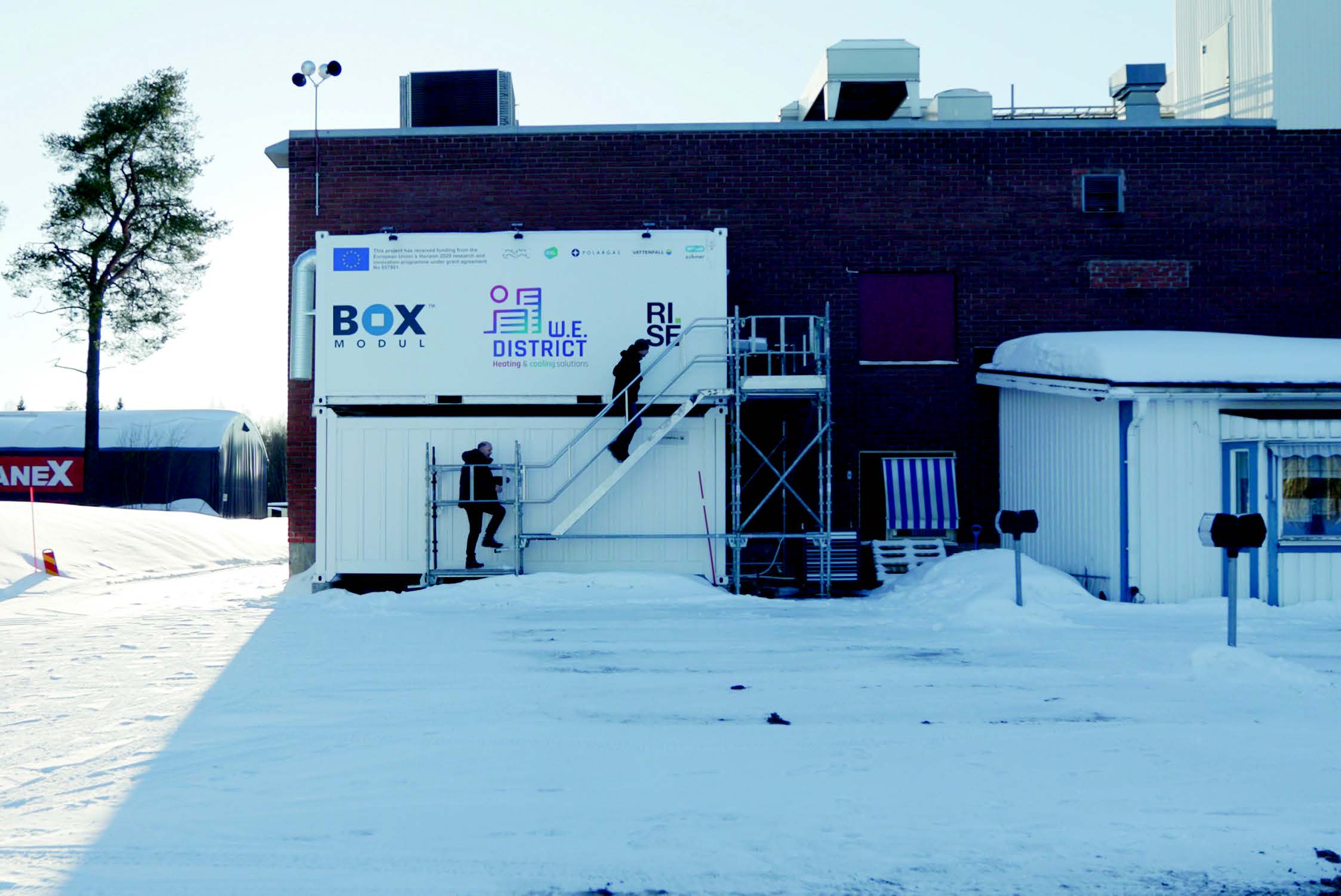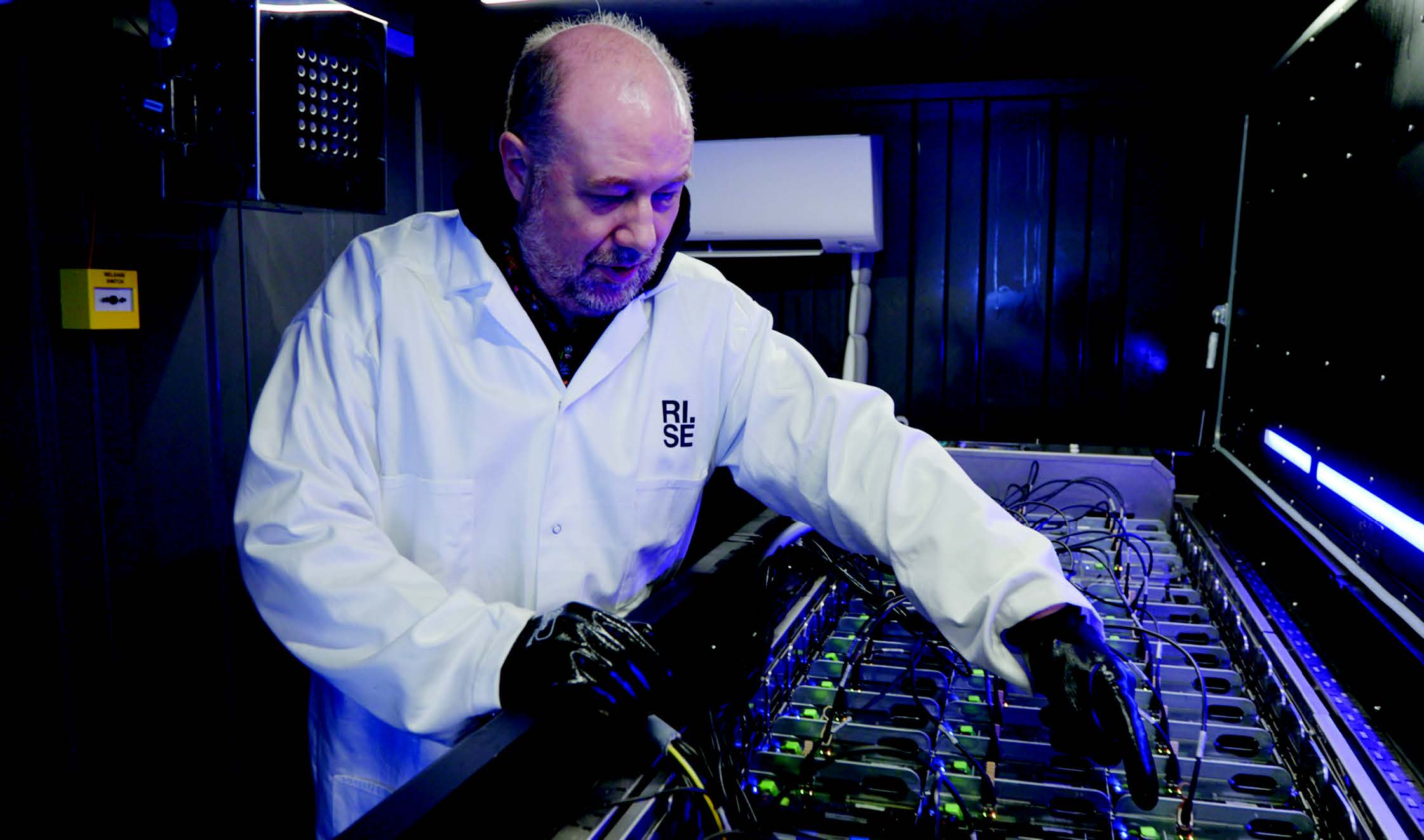Researchers in Luleå, Sweden are combining a fuel cell-powered data centre with a district heating network and a heat exchanger design scheme. It promises to be a shining example of how fossil-free technologies and waste heat recovery solutions can help our warming climate.
By Rebecca Pool, ESCI
Data centres consume vast amounts of energy – the International Energy Authority estimated that the world’s data centres accounted for up to 1.3% of global electricity demand in 2021. But as much as 80% of the electricity consumed during digital processing at a data centre can be released as excess heat.

Addressing challenges
Given this, engineers are searching for efficient ways to capture and repurpose this excess heat – including Professor Jon Summers from RISE research institute in Luleå , Sweden, and the EU-funded WeDistrict project. According to Summers, recovering excess heat from data centres can be a challenge when the data centre is far from the urban region that could use this valuable resource.
Not so at Luleå. Here, the RISE ICE (Infrastructure and Cloud research and test Environment) Datacenter laboratory is close to a district heating network, and together these provide an ideal site for the project’s waste heat recovery experiment. As part of this set-up, Summers and colleagues have also integrated two key technologies, solid oxide fuel cells and a liquid cooling heat-recovery system.
The fuel cells, powered by biogas, provide electrical power to the ICE data centre and help to raise the temperature of the data centre’s waste heat, which will ultimately be used by the district heating system. “We have this symbiosis between the fuel cells and the data centre,” explains Summers. “High temperature solid oxide fuel cells usually run on natural gas but in this project we’re raising sustainability further by using locally-produced biogas.”
Integrating heat exchange
To ensure the recovered heat can be used as efficiently as possible, heat exchangers have been cleverly integrated to the overall system. As Summers says: “From a systems integration perspective – our use of heat exchangers is slightly unique.”
Waste heat from the WeDistrict demonstrator data centre is initially recovered using immersion liquid cooling technology. Here, the data centre servers are immersed in a hydrocarbon-based dielectric coolant. The dielectric coolant harvests the excess heat from the servers via convection, as it circulates around the servers.
Such a set-up is used in some data centres to simply cool its servers, but in this case the warmed dielectric coolant is passed through an oil to water heat exchanger to transfer the heat to water. This warmed water is then fed to the fuel cell system, where a water-to-air finned tube heat exchanger has also been integrated, which heats the incoming air in the system to the necessary operating temperature.
On top of this, the hot exhaust gases created during fuel cell operation are fed through gas-to-water heat exchangers, within each fuel cell system, and this warmed water is then passed to a water-to-water plate-heat exchanger at the RISE ICE Datacenter. Here, the heat from this final water loop is used to warm this building. “In the winter, this building requires a considerable amount of heating, so our project will be providing some relief to the district heating network,” says Summers.
In all, Summers is pleased with how the integration of the immersion liquid cooling technology, heat exchange system and fuel cells. However, he believes that the gas-to-water heat exchangers used in the fuel cell systems could be further developed.
“The fuel cell system comprises nine commercial, domestic fuel cells, daisy-chained together in a container, but we could have extracted higher temperatures from their exhaust gases if different heat exchangers had been used,” he says. “The fuels cells are treated as a black box and we weren’t able to access the heat exchanger this time.”

Next steps at Luleå
Summers is certain that the technologies being demonstrated at Luleå will suit the latest generation of lower temperature district heating networks. The fuel cells at the demonstration site run in parallel to the electrical grid, with the data centre drawing electricity from here at times of sudden, high demand. However, a key aim for the demonstration site with the district heat network is to become grid-independent and operate in ‘island mode.’
“The demo-site would be converting biogas into digital services and heat for consumption in an urban area,” says Summers. “This would work well as the whole set-up is very quiet. Very few fans are required, only to supply air to the fuel cells and we’re mainly pumping liquids around – it’s all a lot quieter than a traditional data center.” From what he and colleagues have learned so far, Summers also believes that such a set-up, based on fuel cells, would be best used in an urban edge data centre, located close to digital users and heat demand. “Our system could scale up to a megawatt, which would cover a range of edge infrastructures,” he says.
“I still think we’ve got some way to go before we can really integrate fuel cells and data centres [for district heating networks],” he adds. “But so far, this has been a very useful proof-of-concept.”

